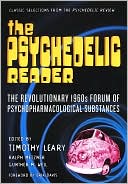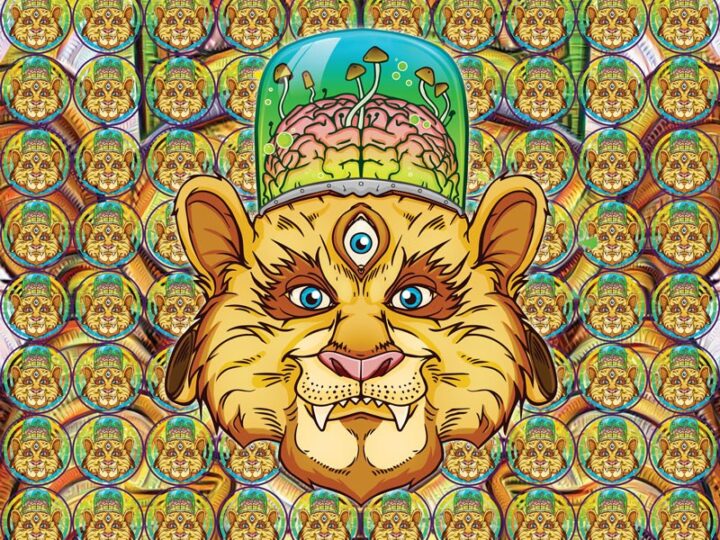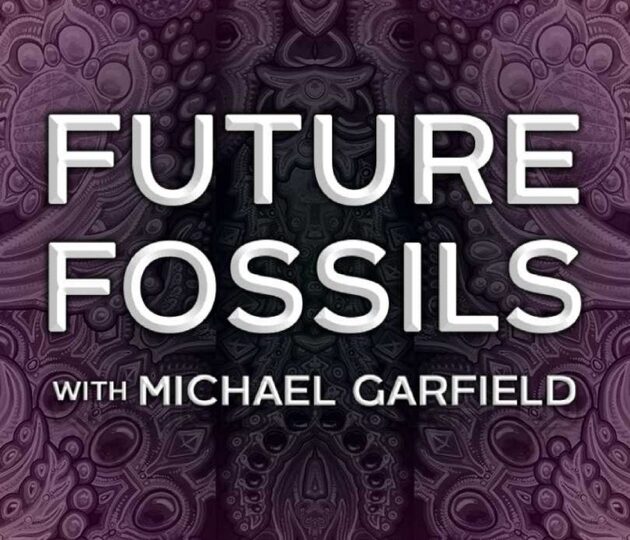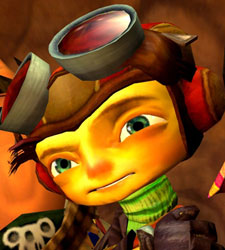
A new introduction (2007)
The Psychedelic Reader
What their conversation looks like, at least to judge from this collection of articles cherry-picked from the first four issues of the Psychedelic Review, is the very opposite of the specialized jargon spats that characterize so many fields of knowledge today. Instead, we have a crazy-quilt collage of poems and plant histories, of third-person protocols and first-person experiences, of law and heresy. This kaleidoscope of voices and perspectives is, it seems, an appopriate reflection of the conundrum presented by the psychedelics themselves, which so emphatically insist on the many dimensions that must be traversed on the way to the One—if, indeed, the One can ever be reached. But the Psychedelic Reader’s collection of views and viewpoints also reflects the very particular and peculiar time and place that shaped the journal, not to mention the operating assumptions of the psychedelic counterculture just beginning to dawn.
The Psychedelic Review was founded by Timothy Leary, Ralph Metzner and Gunther Weil in June of 1963 and ran until the early 1970s. The journal emerged from the psychedelic studies and explorations that Leary and a number of his fellow travelers—at Harvard and, increasingly, from bohemia—began in 1960, after Leary ate some of the flesh of the gods in Mexico. At Harvard, Leary and his colleagues investigated how LSD and psilocybin might aid alcoholics, lessen criminal recidivism, and illuminate the dynamics of madness and mystical experience. Inevitably, they began to explore the philosophical implications of psychedelics, which seem to say so much about the nature of the personality and its relationship to the world and the sub- and superhuman dimensions of the self. With an increasingly messianic Leary at the helm, and scores of young wanna-be subjects jostling to get their feet wet, Harvard’s research program became a kind of ivy-league, left-brain shamanism. To many outside eyes, it was also an irresponsible descent into bad science, if not hedonistic derangement. Just a month before the first issue of the Review appeared, Leary and his colleague Richard Alpert were dismissed from the university.
Sensing their coming censure, Leary and Alpert founded the International Foundation for Internal Freedom in 1962—“internal freedom” being the name of what Leary liked to call their “game.” When it began in 1963, the Review was published under the independent auspices of IFIF, though it continued to sustain a sort of academic tone. Meanwhile, Leary shifted his center of operations to Millbrook, an estate in upstate New York where the good doctor, Metzner, Alpert and a revolving cast of colorful characters dove ever deeper down the rabbit hole. As they plunged, they moved away from the quasi-behaviorist, quasi-existentialist models of mid-century American psychology and engaged the language of mysticism and comparative religion, whose descriptions now seemed experimentally verifiable.
In 1964, Leary, Alpert and Metzner published The Psychedelic Experience (also republished by Citadel), which mapped the unfolding stages of the LSD trip onto the various antechambers of the afterlife described in the Bardo Thödol, the terma text known most famously as the Tibetan Book of the Dead. But even as Leary was trying on his guru sandals, he kept one foot in the secular, scientific, and existential framework that had shaped him and his initial understanding of the tripping mind. So though they were opening to the mystic, the early issues of the Review did not kowtow to witch doctors or ascended masters. Instead, they spoke of man as an animal in an evolving universe, sadly saddled with an anxious technoculture. Indeed, it is this peculiar mixture of DNA and divinity, of secular materialism and mystic pleasure domes, that makes these documents so interesting today, when the split between reason and revelation has become a yawning chasm that threatens to swallow up all of those foolhardy enough to try to bridge the gap.
In “The Religious Experience: Its Production & Interpretation,” we find a Leary halfway between freak and square, Darwin and de Chardin. The core of Leary’s article is the claim—which Leary would return to strongly in the 1970s—that the apparently religious sublimities of an acid trip represent our direct, subjective awareness of the same cosmic and biological processes objectively studied by physicists and neurologists. What allows these awesome, sublime, and sometimes horrifyingly mechanical experiences to occur is a kind of communication between DNA and consciousness—a function that Leary does not overly romanticize, proclaiming it a “biochemical electrical process.” The full implications of Leary’s profane illumination remain to be plumbed—although the anthropologist Jeremy Narby added a few key twists in his 1999 book The Cosmic Serpent, which argued that the serpents that lord over ayahuasca lore reflect the spiral strands of photon-emitting—and hence information-transmitting—DNA.
However outlandish, this sort of evolutionary psychedelia takes on additional resonance today, when the culture wars between religion and atheistic Darwinism are heating up. Here is the nut of the issue: even if religious experience is “only” a product of a chemically tweaked meme-infested meat machine—us, in other words—then those experiences nonetheless may reveal dimensions and perceptions whose coherence and sublimity—even reality—undermine the bunkered “common sense” that keeps us locked in the billiard-ball universe. At the very least, any serious characterization of consciousness must seriously grapple with rare, highly integral, and seemingly profoundly insightful mindstates—and that full grappling occurs inside as well as out, in first- as well as third-person modes. It should be considered intellectually embarrassing to insist on totalizing materialist accounts of consciousness without having spent a little time on the far side of the looking glass.
Unfortunately, Leary’s attempt to prove his thesis using trip reports from his subjects—“I felt myself become one with the Cosmic Vibration”—seems strikingly naïve. In this shoddiness, Leary was not alone, in and outside the pages of the Review. Though thousands of clinical trials were performed across the globe before the United States scheduled LSD in 1967, the methodology of these studies was often rather leaky, with poor protocols and lots of room for projection. “The Treatment of Frigidity with LSD and Ritalin,” which ran in the fourth issue of the Review, is something even sillier: a reminder of how cultural norms bind and blinker research in the social sciences. Like cannabis, psychedelics can certainly help bank the erotic fire. But when American PhDs who came of age in the 1950s start discussing the symptoms and incidence of frigidity among the “human female”— as high as 40% of American women suffer the affliction, we are warned—one feels trapped for a moment in the charmless anachronism of a Playboy cartoon.
Therapeutic psychedelic research is a tricky undertaking, in part because the substances in question threaten to undermine the very frameworks—philosophical, institutional, epistemological—that define the act of research (and the personalities of the researchers and subjects) in the first place. The genie does not slip easily back into the bottle. In his 1963 article for the Review, the great ethnobotanist Richard Evans Schultes warned that “one of the most promising fields for progress ever within man’s grasp can easily be jeopardized or utterly destroyed by irresponsible and inadequately planned research or by the manipulation of dilettantes.” Schultes’ prophecy was hardly heeded by Leary, whose own slippery contradictions—which would help sabotage the clinical study of psychedelics for the next thirty-odd years—are more than evident in the pages of the Review. At one point, in the midst of one rather even-handed article, Leary waxes messianic: “I am trying to expand your consciousness, break through your macroscopic, secular set, ‘turn you on,’…” Later in the same piece, however, Leary offers an unusually revealing glimpse into his own difficult transition from doctor to guru. Psychedelic visionaries, he writes, are “somewhat uncertain about the validity of their revelations,…harassed by the knowledge of their own human frailty, surrounded by the inevitable legion of eccentric would-be followers looking for a new panacea, always in grave doubt about their own motivation…always on the verge of losing their material achievements.”
But the Review also reflects the understanding that, when it comes to psychedelics, double-bind clinical trials reported in objective third-person language can only get you so far. Dry naturalism is never enough; poetry, if not religious reflection, is necessary as well, which is why the journal included chunks of Plato and literary essays about Zen and poems by Charles Olson. Along these lines the Reader includes a vaguely disturbing piece on the “provoked life” by the German Expressionist poet (and one-time Nazi sympathizer) Gottfried Benn, plus some trip poetry from George Andrews, who may or may not be considered to have soared angelic with his invocation of the “incredible paroxysms of the luminous protoplasm.” Far more important than these writings is Leary and Metzner’s fascinating and influential piece on the German writer Herman Hesse, an article that helped insure that the author of Steppenwolf, Siddhartha and The Glass Bead Game would worm his way onto the shelves of every self-respecting hippie and head to come.
Quoting a character from Steppenwolf, Leary and Metzner isolate one of the key themes of their psychedelic psychology:
“You have no doubt guessed long since that the conquest of time and the escape from reality, or however else it may be that you choose to describe your longing, means simply the wish to be relieved of your so-called personality.”
Here is where the mainstream theories of behaviorism and the transpersonal revelations of the acid peak meet: the ordinary personality is a sham, a “robot” in Leary’s techno-Gurdjieffean terms, and the right hallucinogens unscrew the skull-plate and reveal the wiring beneath. Alan Watts picks up a similar theme in his 1963 article for the Review, which appeared the same year he published The Joyous Cosmology, his most overtly psychedelic text. As was often the case, Watts’ core theme was the nature of the relationship between self and world. In the article he contrasts our ordinary sense of ourselves as a “skin-encapsulated ego” that attempts to control the world with a more expansive model of the self as a fluid entity deeply coupled with the world—an “organism-environment field.”
The Taoist and Zen ideas that Watts famously popularized were in mystical and aesthetic synch with this holistic philosophy. But Watts was also influenced by cybernetics, ecology, and the behavioral sciences. In his Review article he even finds some common cause with the notorious B.F. Skinner, the influential behaviorist whose bleakly mechanistic account of psychology was to the 1950s what the human potential movement—which partly grew out of psychedelic therapy—was to the 1970s. Like many neuroscientists today, Skinner argued that our subjective sense of agency is both illusory and inconsequential—we are black box zombies whose apparent actions are really just expressions of the environment or biology acting through us. Though critical of Skinner’s absolutism, Watts sees in his view a mirror of the Mahayana Buddhist notion that, whether we look inside or out, we cannot find any sort of prime mover. Though he presents a far more organic and flowing world than Skinner’s determinist account, Watts sees no persons in reality, and shares with Skinner a withering skepticism about the ordinary personality. Here it becomes clear that psychedelic psychology is not necessarily aligned with either comforting humanistic notions of the self or supernatural accounts of the soul.
In his article on religious experience, Leary mocks the quotidian ego, “your good-old American-social-self” with its controlling fictions and “secular games.” In contrast, psychedelic experience provides the understanding that “you are not a psychological or social or bodily robot.” Instead, according to Leary, you are something like consciousness itself, the pure Emersonian observer that R. Gordon Wasson describes so beautifully in his article on Mexican fungi:
The bemushroomed person is poised in space, a disembodied eye, invisible, incorporeal, seeing but not seen. In truth, he is the five senses disembodied, all of them keyed to the height of sensitivity and awareness, all of them blending into one another most strangely, until the person, utterly passive, becomes a pure receptor, infinitely delicate, of sensations.
In contrast to this exalted state, the ordinary personality is, for Leary, unredeemable in its own terms. What’s needed is a direct experience of transpersonal consciousness, an experience that—the story goes—can enable the individual to reprogram the whole janky robot from above. This is very much the model reflected in one of the most fascinating documents in the Reader, the trip protocols outlined in an article entitled “Some Comments Concerning Dosage Levels of Psychedelic Compounds for Psychotherapeutic Experiences.” The explicit goal of these sessions is to break through old and outmoded value systems and attitudes in order to have “a single experience” of unity consciousness—an influx of Big Mind that can, in turn, precipitate a “radical change in personality structure.”
After forty years, it seems unlikely that such change can come through an intense transpersonal or religious experience without the production of new frameworks of value, perception, community, even tradition. One of the reasons for the popularity of the neotribal paradigms associated with the ayahuasca sects of South America is that they provide a ritualized healing framework that’s both more imaginatively rich and more grounding than the existential and occasionally harrowing attitudes reflected in so much of the early Review. According to Review contributor Joe Adams, who may have dosed Ken Kesey while running clinical trials at the VA Hospital in Palo Alto, the psychedelic experience should be seen, not as a mystical breakthrough, but as a sort of “experimental psychosis.” Adams should know—the doctor experienced a number of his own psychotic breaks, both on and off drugs. Nonetheless, he argued that the bum trips can be good for you, even better than transcendent bliss. “In a world as irrational as ours, to be fully human one must be capable of taking great and sudden pain.”
Over the last forty years, underground psychedelic therapists have drawn from western, eastern and indigenous models in order to heal that pain, or at least to integrate it. For obvious reasons, their results and protocols remain outside the psychological mainstream—even as the mainstream itself has, ironically, capitulated ever further to pharmacological technology. But there are signs of change. As neuroscience becomes the dominant paradigm for understanding the psyche, it may be tough to keep the psychedelics under wraps, if only because these inarguably material substances offer so much potential insight into our minds and nervous systems. And indeed, since the 1990s, a small group of dedicated researchers have re-opened the official dossier on psychedelics. Working at major universities like UCLA and Harvard, these researchers are playing the “secular game” that Leary could not ultimately abide, but they are backing up some of his major claims. A 2006 study by Roland Griffiths, a researcher at John Hopkins, largely substantiated the results of the Good Friday Experiment of 1962, the most famous and important study that Leary had a hand in back at Harvard. The evidence is in: when psilocybin is consumed by religious-minded seekers, a good portion of those consumers will experience full-blown mystical insights—or at least something that feels a hell of a lot like a full-blown mystical insight.
But there’s the rub. Strictly speaking, science can never tell us whether there is a real difference between psychedelic rapture and mystical experience on the natch. What could possibly make one brain state more “authentic” than another one? In other words, no amount of third-person neuro-theological experiments will every be able to compass the confounding majesty of mystical experience, because that confounding majesty demands a dimension of meaningful, poetic ambiguity that cannot be found, by definition, in strictly biological or mechanistic accounts. That said, poetic ambiguity all by itself is a wet noodle.
That’s why there is something to be said for restless dabbling when it comes to the study of psychedelics, because no one perspective is adequate to the task of opening up this sort of cross-dimensional meaning. Only a multi-perspectival approach, an integral dialogue, is warranted—a polyglot conversation that engages plants and policies and gods and molecules. In his Review article on New World hallucinogens, Richard Schultes cites an 16th century Spanish friar who wrote that the bemushroomed Indians, after coming down from the flesh of the gods, “talk over amongst themselves the visions which they have seen.” In a sense, this talk is all we have. May the conversation continue—underground, above ground, and free from the need for anything grounded at all.




